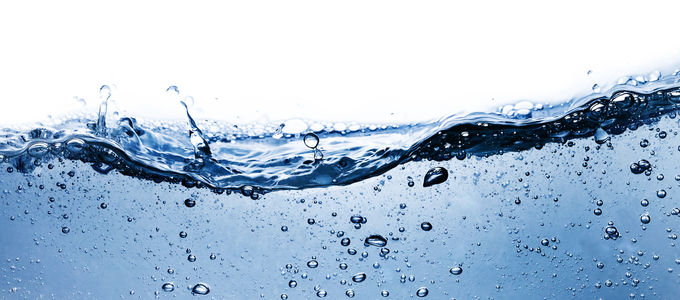
Baptism is as old as the New Testament. It is both a bone of contention as well as a binding element among Christians. Some see it as a rite of entry into Christian life, others regard it as merely a private celebration. In fact, it is more than people think!
“I am baptised.” Christians actually ought to understand this simple statement, although it still leaves several further questions unanswered: as a child? By immersion? In the context of a divine service? In the name of the Trinity or of Christ?” The lowest common denominator among the various Christian denominations is to be baptised “de rite”. Such a baptism involves a benedictory formula and water.
Baptism? What is that?
Sacraments are gifts of God to mankind. In the modern world, this is quickly forgotten. They are not the personal right or property of people who believe in God, but rather an expression of divine care, a divine legacy. Most church catechisms state that sacraments are necessary for salvation, in other words, for deliverance, redemption, and eternal fellowship with God. Denying their significance for salvation degrades them to the point of a personal possession or merely a pleasant church celebration. But they are more than that. No human being can lay claim to any sacraments. Rather, it is God who grants them to whomever He desires. He does not do this “out of the blue” but in a consistent, orderly manner, or “de rite”, as the churches say. In the New Apostolic Church and other churches of ministry, they are dispensed by ordained ministers.
This also applies to baptism with water. It is the first sacrament of the church, and it makes the baptised into a Christian. The effect of baptism is to wash away original sin (also known as “inherited sin”), and to lead a human being out of his original state of remoteness from God. Through this act, the baptised becomes part of the church of Christ, which is the community of all those who believe in Jesus Christ and profess Him as their Lord. As such, baptism with water plays an immensely important role, although it is not appropriate to try to compare the relative values of the sacraments among themselves.
Sprinkling or immersion?
As its very name suggests, baptism has to do with water. The original Greek term for “baptising” actually means “diving”, or “immersion”. Ritual washings or religious purification ceremonies are as old as humanity. Holy Baptism is distinct from these because of its relevance for salvation, which is also why it is called “holy”. It is neither a figurative nor a symbolic action, “but rather a real act of God’s loving care,” as the Catechism states. Even though the various denominational interpretations diverge on this point, the lowest common denominator is nevertheless clear: “Through this act, the relationship between a human being and God is fundamentally changed. The effect of Holy Baptism with water acts upon a person’s entire being” (CNAC 8.1.3.1).
The two principal elements that constitute a duly performed or “de rite” baptism with water are water and the Trinitarian benedictory formula: “I baptise you in the name of God, the Father, the Son, and the Holy Spirit.” Such a baptism with water, performed in the name of the Trinity, is a common bond among Christians. The underlying content is more easily said than accomplished in practice: “The baptised shares in the death of Jesus Christ and in His new life. Seen in a spiritual sense, he partakes in the experience of Jesus Christ. Just as Christ died on the cross for the sins of mankind, so the baptised is to be ‘dead indeed to sin’ by renouncing it” (CNAC 8.1.6). Christ’s death on Golgotha thus becomes the “death” of the baptised individual: his state of remoteness from God is lifted, and a new life with Christ begins. In this context, Paul speaks of the “new man”: the old man goes under, the new man emerges.
Does that mean the baptised must be immersed in water? Many denominations perform baptism this way—and they regard this sacrament as a full body bath. Others may do so on occasion or on special holy days, but otherwise they simply pour water over the head of the baptised. Whether performed upon children or only mature believers, whether by immersion of the entire body or just the head, the important elements that constitute baptism are water and the Trinitarian address!
Baptism with water has its predecessors
What were things like in the past? How did this first sacrament of the church come into being in the first place? There are several predecessors, such as circumcision in ancient Israel. This was the sign of the covenant which identified a man as an Israelite. So, was circumcision just some sort of personal identification or proof of citizenship? No. It was far more than that. First of all, circumcision was only performed upon the male portion of the nation, and secondly, it had a metaphorical function that established identity. It was the expression of a special kind of veneration of God, as well as the fulfilment of His commandment: “And you shall be circumcised in the flesh of your foreskins, and it shall be a sign of the covenant between Me and you” (Genesis 17: 11).
There were also similar practices in ancient Egypt, and many still persist to this day in a number of Islamic denominations.
A powerful apostolic message
And then came the mission to the Gentiles. Gentiles were non-Jewish people—with their own cultural backgrounds—who had been absorbed into the Christian community. After heated discussion among the Apostles, they were ultimately spared the requirement of circumcision: “So God, who knows the heart, acknowledged them by giving them the Holy Spirit, just as He did to us, and made no distinction between us and them, purifying their hearts by faith” (Acts 15: 8–9).
Since then, the sacrament of baptism has represented inclusion in the new covenant with God. The people of ancient times understood this quite well, as they were familiar with stories about Noah and the ark, or the passage of the people of Israel through the Red Sea. The parted waters led them out of captivity and to shores of safety, while the ark protected its passengers from sinking.
Peter’s speech on the first Pentecost brought both elements of baptism—that of water and that of the Spirit—into relationship with one another: “Then Peter said to them, ‘Repent, and let every one of you be baptised in the name of Jesus Christ for the remission of sins, and you shall receive the gift of the Holy Spirit. For the promise is to you and to your children, and to all who are afar off, as many as the Lord our God will call” (Acts 2: 38–39).
Access to Holy Sealing is thus open to the baptised. But more about that in the next issue of this series.
Photo: Chlorophylle – stock.adobe.com














